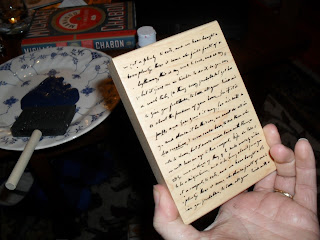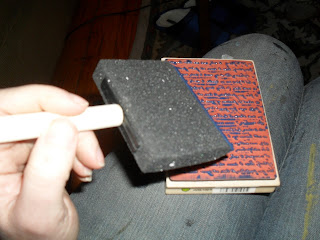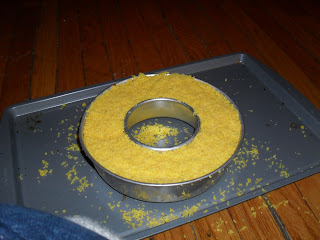In
The New Electric Ballroom, the script calls for a beautiful coffee cake to get smashed every night of the show. I was looking for a way to do that cheaply without having to bake three cakes per weekend (at $3 per cake with mix and eggs that can add up quickly). I had read once about people making snowballs from shaved soap and thought I might be able to use the same technique.
I bought cheap yellow bars of soap, then used my cheese grater to shred the bars into a bowl.
I carefully poured the shavings into my pan and packed them in, but they weren't packing very tightly. They still seemed very grainy and loose in the pan
.

I turned it over and sure enough I was right. the shredded soap didn't hold together at all and I just had a pile of flakes.
I decided to add some water to make the soap stickier, so I packed the flakes in again and poured some water into the pan. TOO MUCH.
I ended up with a gooey sticky mess that I had to throw away. Turns out the water thing requires a much lighter touch.
My next solution was to spray the pan with water and then periodically spray the soap as I was filling the pan before packing another layer. I thought that the water on the outside would help the soap be especially sticky on the shell of the cake where I needed it to be. As is turns out, the water on the outside just made the soap especially stick to the pan.
The final solution was Pam to make sure that the soap didn't stick to the pan.
and then slowly adding water to the mix (with a spray bottle this time) until the soap was ready to stick to itself.
As a side note, you can see here why people use this method for snow balls, they ball up perfectly and I'm sure they would explode on impact.
I packed the soap into the pan again
and then turned it over and hit it with one good whack on the pan to release it
This one cracked a little getting it out, but you get the idea.
This cake ended up getting cut because it was hard to clean up after being smashed in the middle of the floor, and because someone in the company offered to make a cake every night for the run. It's a really cool trick though and I think that it might have lots of applications in future shows.
















